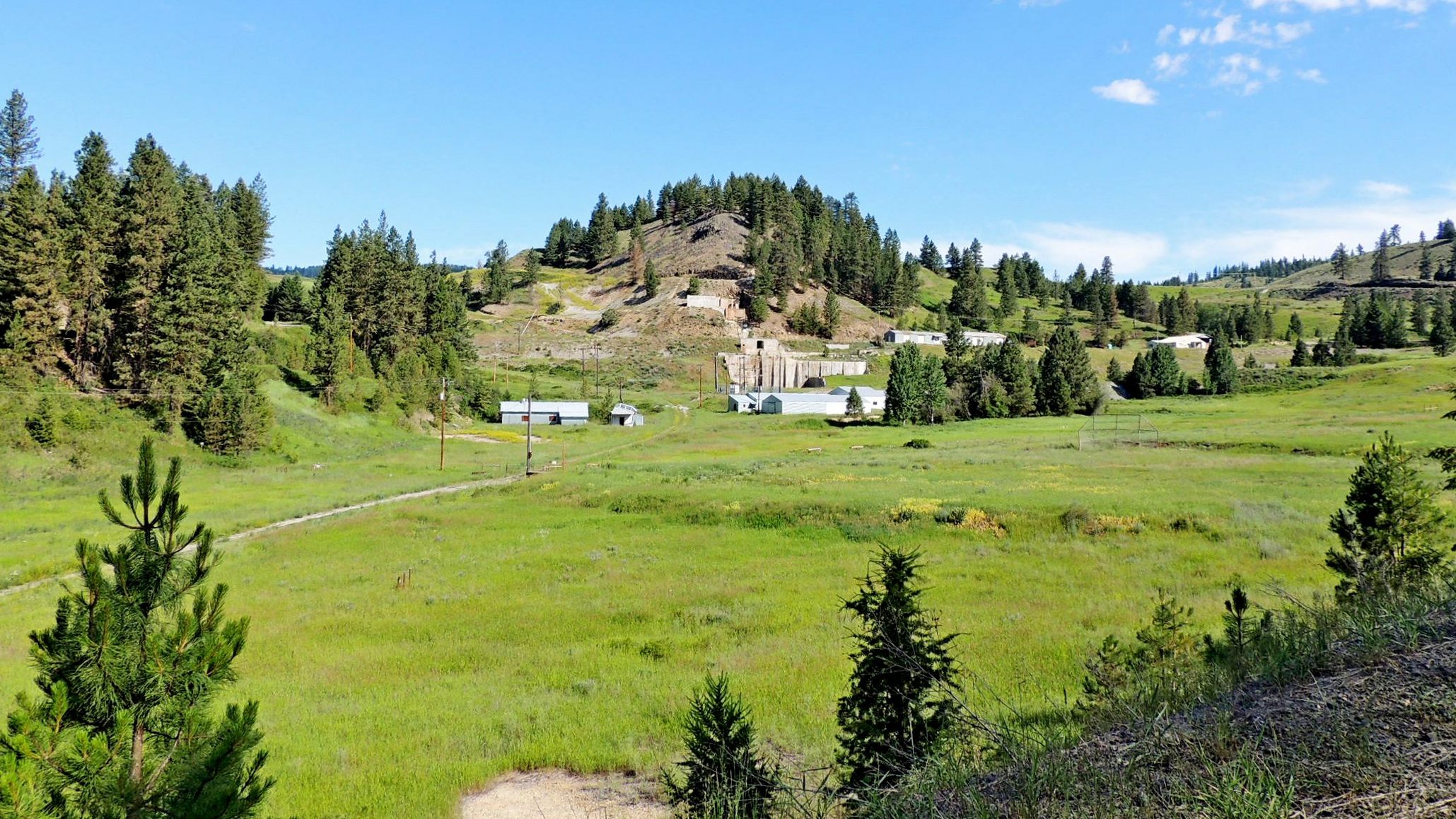|
 Knob Hill Mine - Republic, WA Posted by:  T0SHEA T0SHEA
N 48° 40.082 W 118° 45.174
11U E 370941 N 5392035
One of the longest lasting and most prolific producers of the area, this was the Knob Hill Mine. It produced over 2,000,000 ounces of gold in its lifetime.
Waymark Code: WMRM6B
Location: Washington, United States
Date Posted: 07/06/2016
Views: 2
Coordinates are at East Knob Hill Road, which is south of the mine site and an excellent viewpoint. Access to the mine site itself is forbidden.
The Knob Hill Mine was one of the longest lived mines in the Republic mining district, which, in turn, was one of the most prolific gold producing areas of Washington. The area was opened for prospecting in 1896 and almost immediately substantial gold discoveries were made near what would become the city of Republic. The city sprang into being almost immediately, but its good fortune was short lived. By 1901 the smaller claims had played out and it was not until 1909 that large new discoveries gave the city new life.
The major new discovery was at the Republic mine, followed shortly by more discoveries at the Lone Pine and Knob Hill mines. It was this, the Knob Hill mine, which outlasted all the others, however.
Statistical information for the mine follows, while a brief history of the mine can be read further below.
West 1/2 of the Southeast 1/4 of section 27, T37N-R32E
An Au, Ag mine
This mine is located at the Head of Eureka Gulch
It worked 4 parallel epithermal veins and a cross vein with widths from 5'-15' in Eocene volcanics of the Klondike Mountain Formation
Developments include a 1,200' shaft with 9 levels at 110' intervals, The golden promise shaft, adjoining rad tunnel connecting the two mines, and abandoned open pits
It produced more then $10,000,000 by the end of 1951; on June 24, 1989 the Hecla mining company produced the 2,000,000th ounce of gold from the Hecla 2 shaft.
From Mine Data Org![]()

The Knob Hill Mine
The Republic (Eureka) district is in western Ferry County near the town of Republic, about 25 miles south of the international boundary.
The Republic district has had the most consistent record of large gold production of any district in the State. Prospecting began in this area when the northern part of the Colville Indian Reservation was opened in 1896. Deposits assaying high gold content were soon found, and many shipments were made until 1901 when the district closed. By 1903 railroads linked the district with large smelters on the Pacific coast, and small-scale activity was resumed.
In 1909 the discovery of substantial amounts of high-grade ore at the Republic mine and of new ore bodies on other properties resulted in a revival of the district; later large-scale production from the Lone Pine and Knob Hill mines sustained activity through 1928. Mining fluctuated from 1928 until after World War II, when the Knob Hill mine emerged as the largest and most consistent producer. In 1960 it was the third most productive lode-gold mine in the United States.
From Western Mining
Yet the Great Depression came with a silver lining -- actually a gold lining -- for Republic. The price of gold soared to $35 an ounce in 1933 and most of the mines in the old Eureka Gulch re-opened, including the Republic Mine and one of the best-known of the recent producers, the Knob Hill, just a few miles out of town.
Republic has gone through a number of mine-closing/reopening cycles. Some uranium finds sparked some interest in the 1950s, and some of the mines diversified into tungsten. The Knob Hill mine continued to produce gold and silver and in 1956 had a payroll of 75.
Two catastrophes arrived one after the other in the bleak early winter of 1983. First, the Knob Hill mine announced it would soon close and take 100 jobs with it. A week later, on December 4, 1983, a fire blazed through the town's main street one more time.
Then, in 1984, Hecla Mining Co., which owned the Knob Hill Mine, now called the Republic Unit, announced that it had found fresh new deposits. The mine wouldn’t have to close after all. By 1986 the company could claim that it was the "cheapest gold producer in the United States" (Ripley). In 1987, a new shaft, the Golden Promise, hit another gold ore body.
Yet the bust came again in the mid-1990s when Hecla closed its Knob Hill mine for good when the ore body ran out.
From History Link Org
![]()
Mine Type: Abandoned Mine

Mineral Collecting: No

Material Mined: Precious Metal

Operation: Underground Mine

Surface Features: Yes

KNOWN DANGERS:
Possibly many dangers, access is prohibited

Any associated website: [Web Link]

Any Other information: Not listed

|
Visit Instructions:
Optional photograph welcomed.
Recent Visits/Logs:
| There are no logs for this waymark yet. |
|
|
|
|